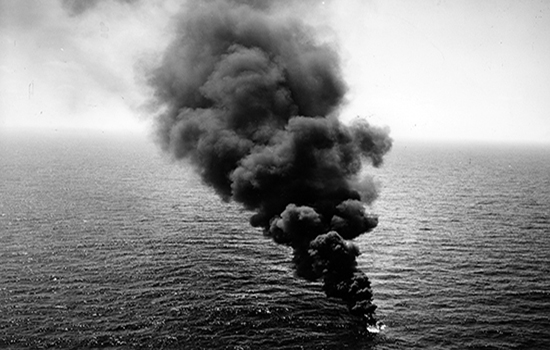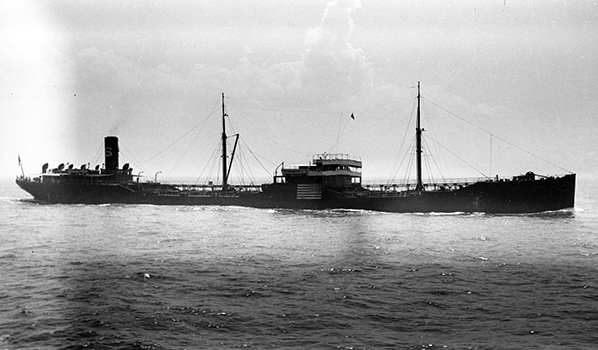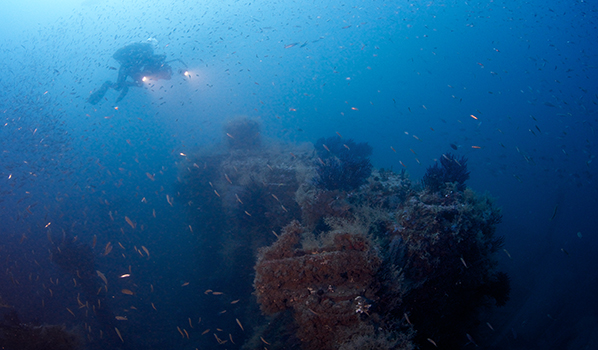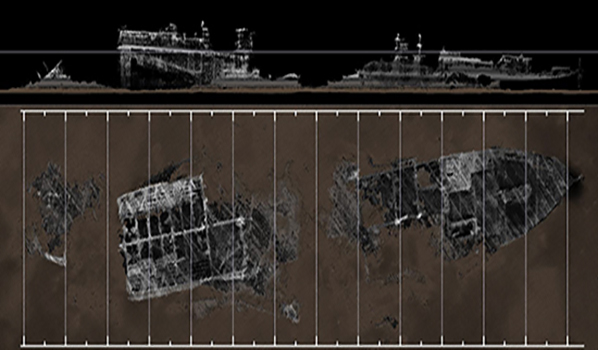Atlas
Ship Stats
Location: 34°31'42.02"N, 76°14'31.41"W (34.52834, -76.24206)
Depth: 125 feet
Vessel Type: Tanker
Length: 430 feet Breadth: 58.2 feet
Gross Tonnage: 7,137 Cargo: 84,239 barrels gasoline
Built: 1916, William Cramp and Sons Ship and Engine Building Company, Philadelphia, Pennsylvania, USA
Hull Number: 107 Port of Registry: New York, New York, USA
Owner: Socony-Vacuum Oil Co. Inc., New York, USA
Lloyd's Register Details: Steel hull, steam screw, single screw, 2 decks, machinery aft, oil-fired steam, triple-expansion, three-cylinder steam engine, Engine 565 NHP, 300 IHP, flat keel
Former Names: Sunoil (Sun Company, 1916-1927)
Date Lost: April 9, 1942
Sunk By: U-552 Survivors: 32 of 34 survived (2 dead)
Data Collected on Site: Still and video photography; high resolution multibeam
Significance: Casualty of World War II's Battle of the Atlantic
Wreck Site
The wreck of Atlas rests in 125 feet of water, and the remains are mostly intact. The remains have high relief, are not widely disarticulated and are constituted in a small area, approximately the size of the vessel prior to sinking. The site retains a high degree of structural integrity with many large intact sections. The most intact section is near the stern with the quadruple expansion steam engine rising high off the seabed. The high relief of the site also supports a diverse ecosystem.
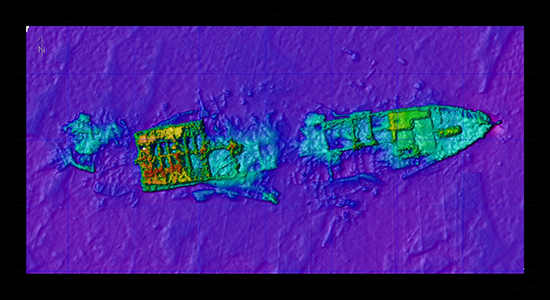
Historical Background
Atlas was built in 1916 under the original name Sunoil by William Cramp and Sons Ship and Engine Building Company of Philadelphia, Pennsylvania. Purchased by the Sun Company, the vessel operated as a tanker, making trips from the Gulf of Mexico to New York. Sold to Socony-Vacuum Oil Company of New York in 1927, the vessel was then renamed Atlas. Atlas would continue to operate the same route through the beginning of World War II.
On April 9, 1942, the unescorted and unarmed Atlas was sailing from Houston, Texas to Seawarren, New Jersey, loaded with over 84,000 barrels of gasoline. Early that morning the ship was traveling off the coast of North Carolina, and as it passed Cape Lookout, U-552 fired a torpedo that struck on the starboard side. Luckily, the explosion did not ignite the cargo. The engines were stopped and the crew of eight officers and 26 men abandoned ship in three lifeboats.
U-552 moved in closer and fired a second torpedo, striking Atlas, in the same vicinity as the first, creating a fireball that caused the ship to burn from stem to stern. Two of the three lifeboats got away without harm. However, one lifeboat with 11 crewmembers drifted into the burning gasoline on the water. They were ordered to jump overboard before the fire swept over them, but two men drowned as they tried to escape the flames. An aircraft sighted the lifeboats the next morning that helped guide a U.S. Coast Guard cutter to the surviving crew.
